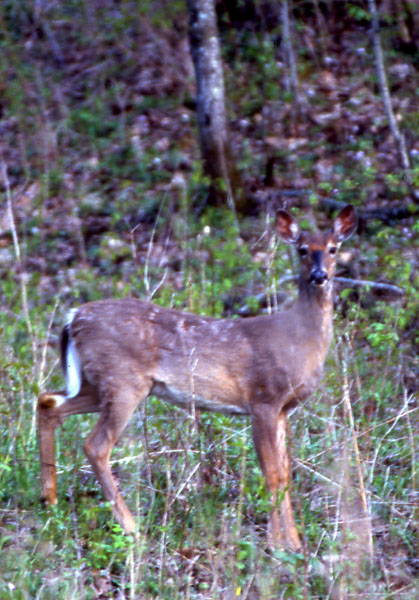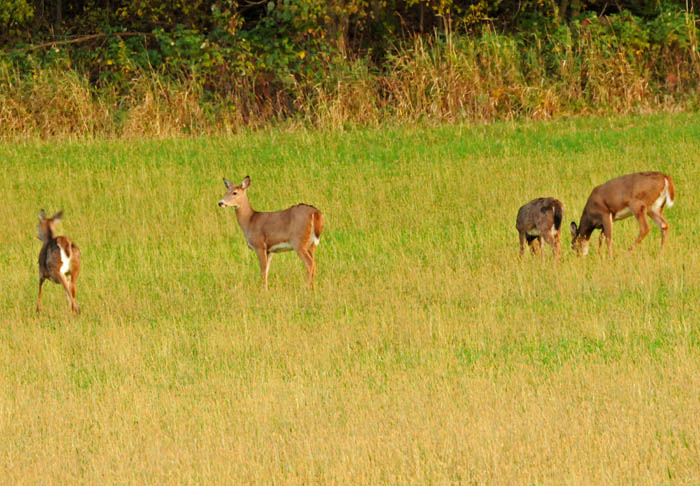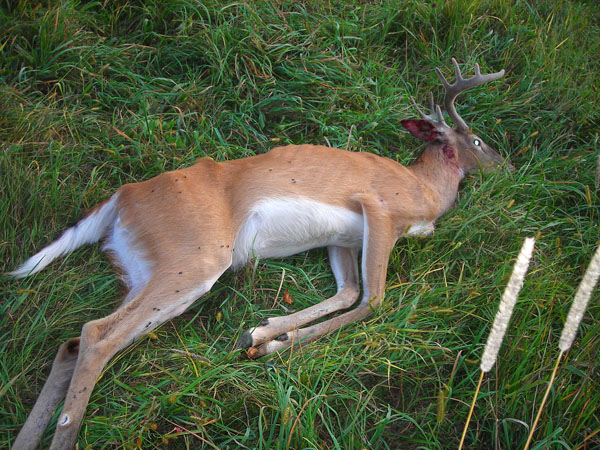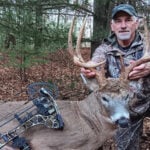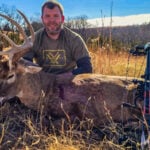LAST UPDATED: May 1st, 2015
For 12 years Wisconsin has watched and listened as a group of deer hunting faith-healers in its southwestern corner criticized and blocked scientific efforts to manage chronic wasting disease.
Meanwhile, they’ve offered no alternatives, even as CWD increasingly infected their region and started its slow, relentless spread outward. But now some of these folks claim their “smarter, passive plan” is to simply let Mother Nature handle CWD through evolution. The chief proponent of that plan is Blue Mound’s Anthony Grabski, a hunter, farmer, scientist of protein biochemistry, and chairman of Iowa County’s delegation to the Wisconsin Conservation Congress.
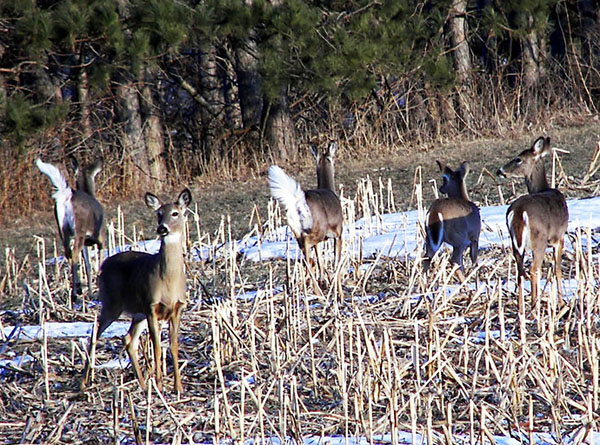
In order to let “nature take its course” most efficiently, we would have to quit hunting deer and let the population explode.
Grabski outlined the plan in a recent guest editorial in the Milwaukee Journal-Sentinel. Since then, those who think the plan has scientific merit regularly forward links to the editorial, some with strongly worded demands to read it. Grabski builds his case by quoting a 2012 research paper by Stacie Robinson, Ph.D., and Professor Michael Samuel at the University of Wisconsin-Madison. By citing selectively from Robinson’s research, Grabski suggests we’ll see a CWD-resistant deer herd as soon as 50 years from now if we cease “aggressive” efforts like Illinois’ sharpshooting program, which culls deer in CWD-infected areas. But Robinson never suggests evolution/natural selection is a disease-management option. In fact, she writes this on Page 8 of her paper: “Wild cervid (deer) populations are unlikely to evolve quickly enough for selection to influence disease management, although long-term selective breeding may be feasible for captive cervids.”
Still, one understands that some folks might misread her research. If you glance at Robinson’s paper, you might think Grabski correctly reported that 41 percent of deer in Wisconsin’s CWD core area were disease-resistant. But that’s not quite right. Robinson reported that of deer testing negative for CWD, 41 percent were resistant. An accompanying chart shows about 25 percent of the herd is actually resistant. Grabski also claims infection of brain stems in CWD-resistant deer was 12 times lower than in other deer, but he fails to note an important fact: Those results are not from deer in the CWD core area. They’re from deer on the infamous Stan Hall deer farm in central Wisconsin, where 80 percent of deer had CWD.
Once stricken by CWD, deer with some resistance to the disease would live only about eight months longer than those with little or no resistance.
Granted, CWD-resistant deer were four times less likely to contract the disease. And yes, they lived nearly 50 percent longer than more susceptible deer, but that’s only about eight months. And because the percentage of deer with CWD resistance is 25 not 41, any possible genetic shifts would take much longer. Either way, these facts remain: CWD is a death sentence for every deer infected, and it does not go away. In fact, as Robinson notes, the longer sick deer live with CWD, the more disease-causing prions they shed onto the landscape.
And remember: We still don’t know exactly how CWD infects deer. Do they get it by eating plants and leaves contaminated by prions passed from the ground through roots? Can they get it by licking urine- and feces-tainted dirt in scrapes and bait piles? How about by mutual grooming or in utero? Neither do we know if or how prions change as they sit in soil, pass through plants, or move through a deer’s digestive system. And yet Grabski takes a mere possibility from Robinson’s research and makes it a near certainty. Yes, natural selection might favor CWD-resistant deer and create a more disease-resistant herd in 250 years if infection rates are low, and in 50 years if infection rates are high. But what he doesn’t say – and Robinson does – is that the scientific models generating her time estimates were based on unhunted deer herds. For natural selection to work efficiently, disease rates and disease-caused deaths must be high. That means no hunting. It also means no deer movements in and out of disease zones. How would Mother Nature do that?
Researchers don’t think evolution would work quickly enough to effectively manage CWD.
If we stopped hunting and controlled deer movements, could natural selection create a CWD-resistant herd in 50 years? Robinson’s paper suggests it’s possible, but it would also require infection rates like those of the Hall Farm. Do we really wish CWD on 80 percent of Wisconsin’s free-ranging deer? It’s interesting that Grabski attacks Illinois’ sharpshooting/culling efforts on the grounds it reduces the “selective pressure” of natural selection. You can’t criticize selective culling unless you also condemn recreational hunting, which would disrupt natural selection further with its more random kills.
No deer recovers once infected by CWD. This 2.5-year-old buck from Wisconsin’s Iowa County had to be dispatched by the DNR after a citizen saw it struggling from CWD. Photo courtesy of Wisconsin DNR.
If Grabski truly believes in passive deer/disease management through evolution, he should use his chairmanship of Iowa County’s Conservation Congress delegation to propose we stop deer hunting for at least 50 years to test his faith in evolution. After all, when wrapping your argument in someone else’s research, you can’t underline the points you like and cross out the caveats.
What do you think is the best options?

 By
By 